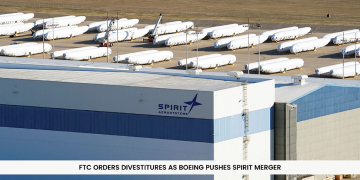In the future, robots similar to humans might be everywhere, just like smartphones and cars are today. This could change how we live and work. A Silicon Valley company named Agility Robotics showed its humanoid robot, “Digit,” to investors and the media. This shows a future where robots and humans can work together seamlessly.
Jonathan Hurst, co-founder of Agility Robotics, described this moment as a significant historical turning point. He highlighted how humanoid robots could change the world in a big way. Hurst’s vision revolves around a world where people can interact with these machines naturally, simply by talking to them and asking them for help with different tasks quickly.
The latest version of Digit, the robot, can do things such as loading and unloading bins, stacking items, and problem-solving in real-time. Digit can operate independently because it uses OpenAI’s ChatGPT 4.0 AI integrated into its software. However, it faced some challenges during the testing phase.
Despite these remarkable advancements, the technology is still new and developing. When they showed Digit in action, it had some issues, such as occasional difficulty understanding voice commands and maintaining balance, highlighting the challenges developers must overcome. Moreover, strict safety regulations require humans to maintain a distance of six feet from Digit, underlining the cautious approach to integrating robots into human environments.
A big company, Amazon, will try using a robot called “Digit” in its warehouses. They are also using lots of other robots, about 750,000 of them, to work together with their employees. Initially, Digit will help employees in Amazon’s warehouses by handling tasks like recycling totes. Also, it will do repetitive tasks and improve efficiency within the warehouse setting.
People are worried that robots taking over jobs could make it hard for them to find work. Many workers in different industries are concerned that machines doing tasks might lead to fewer job opportunities. Even in Hollywood, people are thinking about artificial intelligence. Writers and actors are worried that AI-created content might replace human creativity and talent in movies and shows.
Despite these concerns, Hurst remains optimistic about the future, even though some people are worried. They don’t think robots will take over jobs right away. Hurst says that is because it takes work to make and grow robots quickly. Agility Robotics aims to scale production significantly. They plan to build 10,000 robots annually in their Oregon factory by 2027.
Agility’s Chief Technology Officer, Melonee Wise, thinks their robot Digit can do more than just one thing. She sees Digit as a platform where people can create different jobs for the robot. It is like a store where you can find other apps for your phone, but for work tasks that the robot can do.
As the development and integration of human-like robots progress, society finds itself at the intersection of technological innovation and ethical considerations. Finding the right balance between using automation for increased efficiency and ensuring job security is essential for the future of work. We need to figure out how to use technology to be more efficient while providing enough jobs for people. We are just learning how robots and humans can work well together. How we handle this will determine how we work in the future, not too far from now.






